ALMA image of galaxy NGC 4321, also known as Messier 100, an intermediate spiral galaxy located about 55 million light-years from Earth in the constellation Coma Berenices. It is imaged as part of the PHANGS-ALMA survey to study the properties of star-forming clouds in disk galaxies.
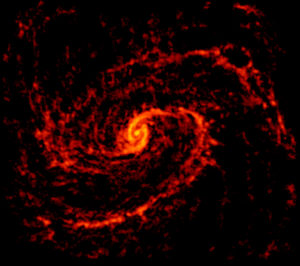
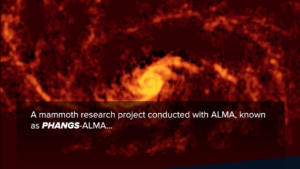
PHANGS-ALMA
ALMA is revealing new insights into the relationship between star-forming clouds and their host galaxies.
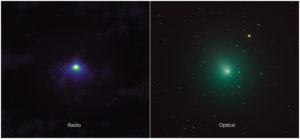
ALMA’s View of Comet 46P/Wirtanen
Side-by-side comparison shows an ALMA image of comet 46P/Wirtanen (left) and an optical image (right). The ALMA image has approximately 1000 times the resolution of the optical image and zooms in on the inner portion of the comet’s diffuse coma.
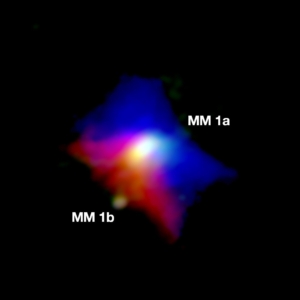
Curious Binary System Seen by ALMA
Astronomers using ALMA have found two young stars with wildly different masses forming in the same protoplanetary disk. The main central star, MM1a, is 80 times more massive than its companion, MM1b. Their striking difference in size suggests that they formed by following two very different paths. The more massive star took the more traditional route by collapsing under gravity out of a dense “core” of gas. The smaller one likely followed the road less traveled by – at least for stars – by accumulating mass from a portion of the disk that “fragmented” away as it matured, a process that may have more in common with the birth of gas-giant planets. Observation of the dust emission (green) and the cool gas around MM1a (red is receding gas, blue is approaching gas), indicates that the outflow cavity rotates in the same sense as the central accretion disc. MM1b is seen orbiting in the lower left.
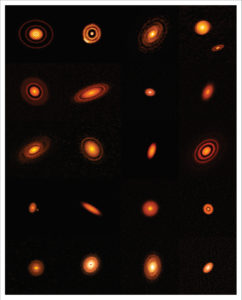
Twenty Protoplanetary Disks Imaged by ALMA
A team of astronomers has conducted ALMA‘s first large-scale, high-resolution survey of protoplanetary disks. Known as the Disk Substructures at High Angular Resolution Project (DSHARP), this “Large Program” of ALMA has yielded stunning, high-resolution images of 20 nearby protoplanetary disks and given astronomers new insights into the variety of features they contain and the speed with which planets can emerge.

ALMA Sees Trans-galactic Streamers Feeding Distant Galaxy
ALMA image reveals how W2246-0526 is being fed by three companion galaxies through trans-galactic streamers of gas. The main galaxy and one of its companions are in the center. To the lower left is another companion and its large tidal tail that connects it to the main galaxy. The upper left concentration is the third such companion galaxy.





